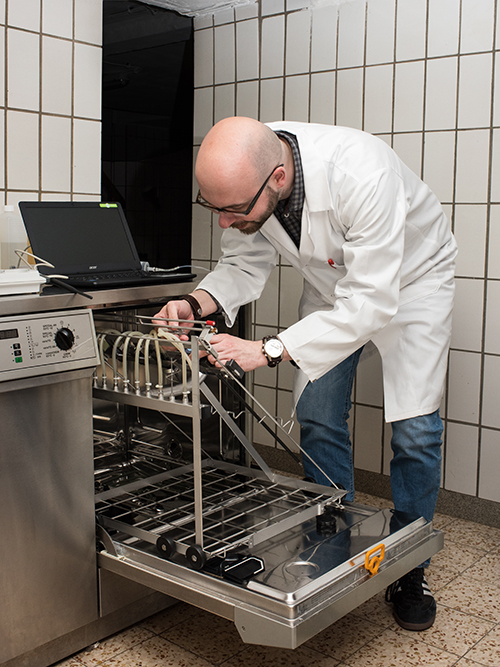Fields
Development
‘Removal of contamination from an object to the extent required for its further treatment and intended further use‘. This is the definition of cleaning in the standard EN ISO 15883-1.
There is general agreement that all reprocessed medical devices should be visually clean. Thus the salient point is not the initial amount of soil, nor the degree of reduction of it in a microbiological sense, but about undercutting a threshold. The “extent required“ cannot be accurately defined, since there are no clinical studies showing what residual quantities could compromise sterilisation or allow transmission of residual soil to the tissue of a patient via re-use of devices, causing an immunological reaction or hindering wound healing. Therefore the rule stands that the cleaner the device is, the safer the re-use of it. We need to show what can be attained by the current state of cleaning technology as well as aiming to further develop and optimise it. With this in mind, the DWM test laboratory aims to optimise the steps in the chain of cleaning processes. This includes the use of chemical additives and we aim to support the enhancement and development of cleaning technology i.e. optimised exposition of the items to be cleaned, as well as the use of targeted adaptors and injectors for hollow lumens.

 EN
EN DE
DE